Creation of new cryptocurrencies. Stablecoins and crypto dollars. Video games with interchangeable items. Governance organizations.
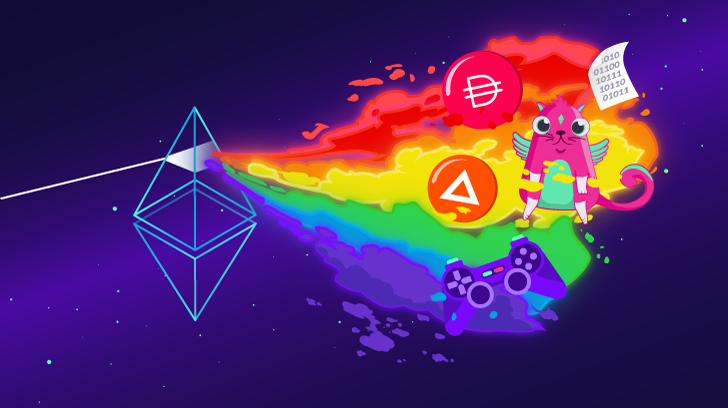
Smart contracts allow for very broad possibilities of specific uses, from those used to create new cryptocurrencies (including stablecoins), to others that allow the design of video games or decentralized governance systems.
Thanks to this functionality, Ethereum became an infrastructure network for the entire crypto ecosystem. And the possibilities are only restricted by the ability of developers to translate specific processes into the Ethereum language.
Cryptocurrencies
One of the first widely spread uses of smart contracts was the possibility of creating new cryptocurrencies with unusual simplicity. This is possible thanks to the ERC-20 protocol, which simplifies and standardizes the creation of tokens on the Ethereum blockchain.
Before the existence of Ethereum, if someone wanted to create a new crypto, it was necessary to write a whole new blockchain, to fork the existing one; or that the cryptocurrency was integrated into the Bitcoin blockchain, not an easy task.
Ethereum brought the possibility of creating new cryptocurrencies, secured in its blockchain by just writing a smart contract, and with the ERC-20 standard guaranteeing operation and interoperability.
This gave rise to a small “gold rush” in the form of ICOs (Initial Coin Offering), a method that linked the launch of a new cryptocurrency to a “crowdfunding” type prior sale system.
Stablecoins
We dedicate an entire guide to this type of cryptocurrency, given its current importance in the ecosystem. You can read it here to clear all your doubts.
To summarize, stablecoins are a type of cryptocurrency whose price is always associated with that of another asset, which is why they are considered “stable.”
The best known are those that have one-to-one parity with the US dollar, such as DAI or USDC, also known as crypto dollars. Although there are also others, such as PAX Gold, which maintains its stability linked to the value of the ounce of gold.
All of these cryptocurrencies work based on smart contracts hosted on the Ethereum blockchain and under the ERC-20 standard.
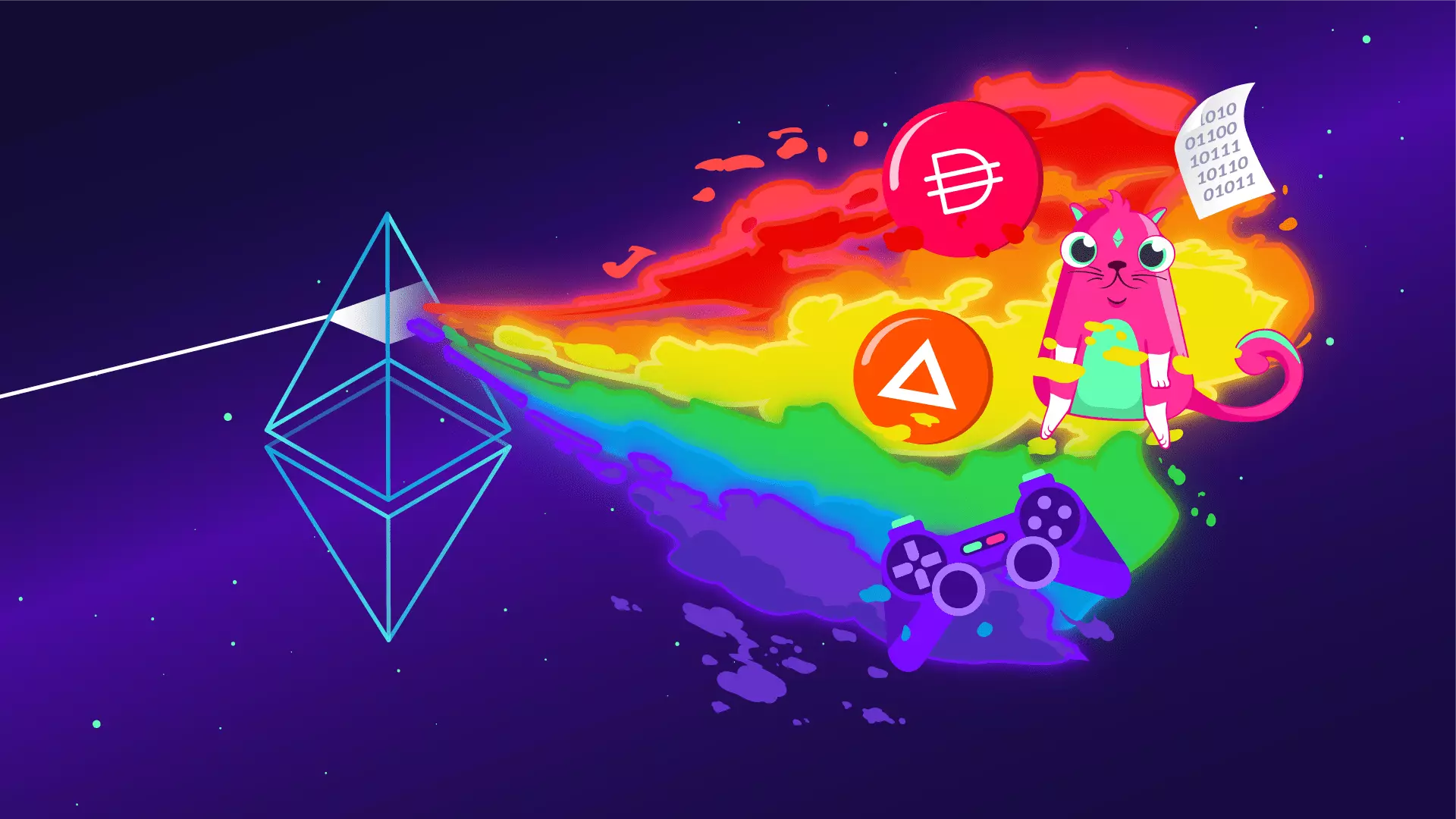
Ethereum provides the infrastructure for multiple developments, from video games to stablecoins and collectibles.
video game
With Ethereum, the possibility of creating unique digital tokens gave rise to the design of video games with collectible and exchangeable objects.
Instead of ERC-20, many of these games use another protocol, ERC-721, which allows the creation of non-fungible tokens.
The difference between a fungible token and a non-fungible token is that the latter represent objects with unique characteristics (a deed or a car license plate), while the former represent objects with identical characteristics (all $1 bills).
For example, one DAI token is equal to all other DAI tokens. On the contrary, each blockchain kitten in the CryptoKitties game is unique and unrepeatable.
This opened the possibility that, in video games, each collectible item could be transferred to Ethereum-compatible wallets, thus creating a market for digital collectible items.
In CryptoKitties, users can breed cats, cross them, and have kittens with different hair, eye, color, and size characteristics. Other video games that use this technology are Gods Unchained, with digital trading cards in the style of Magic: The Gathering; and Decentraland, a virtual reality world with its own token, where each user can buy a plot in that world and build whatever they want.
This modality even reached the world of football and figurines. The Socios.com game allows you to collect players from teams around the world, build your squad and play matches. In addition, these collectibles can be sold and have official licenses from teams such as Barcelona, Juventus and the Argentine Independiente.
Even the multinational Panini, the world’s leading creator of figurine albums, launched its own blockchain-based collectibles system.
Governance
No less important are smart contracts that allow the creation of governance organizations.
For example, The DAO was an attempt to put control of the smart contract in the hands of users. In this way, those who had a certain amount of tokens could decide what direction the project would take.
But following a vulnerability that forced the entire Ethereum network to hard fork, the DAO project was left in ruins.
However, the original idea still exists in other cryptocurrencies. Like the DAI stablecoin, created by the MakerDAO organization. Those who hold the Maker token (MKR) can make decisions regarding the project, through a decentralized voting system.
Decentralized Finance (DeFi)
Financial tools through smart contracts. Difference with traditional services. Loans with performance.

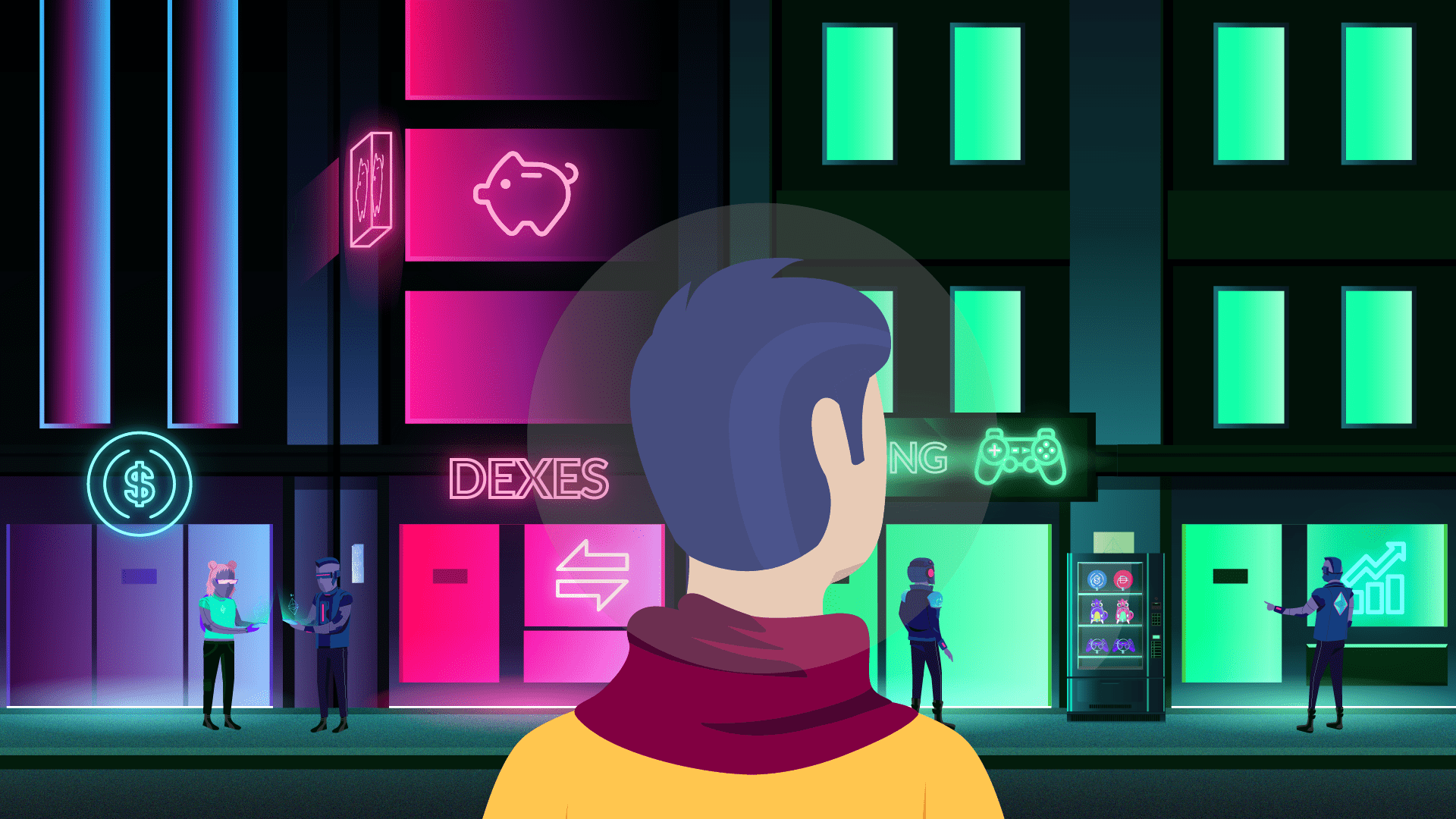
Ethereum gave rise to a range of financial services and decentralized tools for trading securities
Traditional financial services
Decentralized lending protocols take some very simple concepts from traditional finance and implement them through smart contracts.
When someone deposits money into their bank account, they can access it at any time, but they can also move it to other types of deposits to receive interest. The reason interest is earned is that the bank uses that money to make different types of investments, such as mortgages, personal and business loans.
These loans usually have a higher interest rate than the one the user obtains for depositing their money. That difference between what they pay lenders and charge lenders is one of the ways banks make money.
The novelty that DeFi presents
DeFi lending protocols offer a way to earn a return on cryptocurrencies without giving up ownership of our assets to a “centralized” third party. This is achieved through smart contracts on the Ethereum blockchain.
The smart contract represents a place where assets can be pooled, much like the way deposits are pooled in a bank. But with the advantage that its custody is not delegated to a centralized entity.
With these funds any user can request loans from the contract, and thus investor users obtain periodic returns by depositing a certain amount of cryptocurrencies in a smart contract.
How to get started in DeFi
DeFi allows you to create a lot of applications and types of projects. And among the most notable categories are developments that allow us to emulate a function of the traditional financial system but with tokens, on a blockchain and in a decentralized manner.
Lending: oriented towards loans that allow both taking on debt and providing liquidity. Thus, users with idle cryptocurrencies can earn interest by depositing them on different platforms. This is the case of Maker, Compound and Ripio Credit Network, the lending platform created by Ripio.
Dexes: For a long time, cryptocurrency users viewed with suspicion the fact of having to transfer their cryptocurrencies to an exchange to be able to operate there. From there came the idea of creating exchanges that work directly on the blockchain, without the need for intermediaries, such as Uniswap, Curve (for stablecoins) or Balancer.
Derivatives: are a type of financial asset whose value is derived from another asset or another set of assets; as a second layer of value. Projects like Nexus bring this idea to reality in DeFi.
Payments: making payments easily is one of the initial promises of any cryptocurrency. But with the growth of platforms and network congestion, small transactions become very expensive and slow. For this, new systems integrated into pre-existing blockchains were created, to make payments quickly and at a very low cost. Such is the case of Flexa, in Ethereum, or Lightning Network, in Bitcoin.
Assets: projects that allow the creation of new assets such as WBTC, a stablecoin whose price is at 1:1 parity with Bitcoin, but works on the Ethereum blockchain. Or Yearn, which created an asset that is used for multiple financial operations.
The case of Yagecoin Credit Network
Yagecoin Credit Network is a global credit network, based on the Ethereum blockchain. RCN connects lenders and borrowers, who can be anywhere in the world, to lend and receive money in any currency, thanks to the technology of this protocol.
This system allows, for example, someone to make a loan in Chinese yuan and another person to receive that sum, and be able to return it, in Argentine pesos. In this way, RCN manages to create a global credit network, without intermediaries.
The system is based on smart contracts that uniquely guarantee transparency and reliability in loans. Once its conditions are established, they cannot be changed from any point of view.
Decentralized applications (DApps)
What are DApps. Decentralization and interoperability of smart contracts. Advantages over traditional apps.


The distributed computer that turns out to be the Ethereum network allowed the creation of decentralized apps.
Advantages of DApps
Zero downtime: Once the smart contract is implemented in the core of an application and in the blockchain, the network as a whole will always be able to serve those seeking to interact with the contract. Therefore, denial of service attacks cannot be launched targeting individual DApps.
Privacy: You do not need to provide a real identity to deploy or interact with a DApp.
Censorship resistance: No entity on the network can prevent users from sending transactions or deploying DApps.
Data integrity: Data stored in the blockchain is immutable and indisputable, thanks to cryptography. You cannot falsify transactions or other data that has already been made public.
Computing without central servers: Smart contracts can be analyzed and guaranteed to execute predictably, without the need to trust a central authority.
Modularity (Composability): one of the nicest and most functional features of DApps is that, as they run under the same blockchain and use compatible programming languages, they are very easy to use as elements to create new applications from pre-existing ones. In this way, the “friction” between DApps is reduced to a minimum, leading to the creation of an entire ecosystem compatible with each other.
ERC-20 protocol and new tokens
Token interfaces in Ethereum. What are fungible tokens. Utility of tokenization as a form of representation of goods.

One of Ethereum’s development standards focuses on token interfaces, which help ensure that smart contracts are interoperable and that, for example, if a new token is created, it is compatible with decentralized exchanges and DeFi protocols.
Tokens can represent virtually anything on Ethereum, from powers or items of a character in a video game to real assets like a share of a company’s stock, a fiat currency, or an ounce of gold.
Therefore, all this variety of options has to be managed by a single standard. This is how the ERC-20 protocol was born, which introduces a standard for fungible tokens, that is, tokens that have the property that each unit is forever exactly the same (in type and value) as the other.
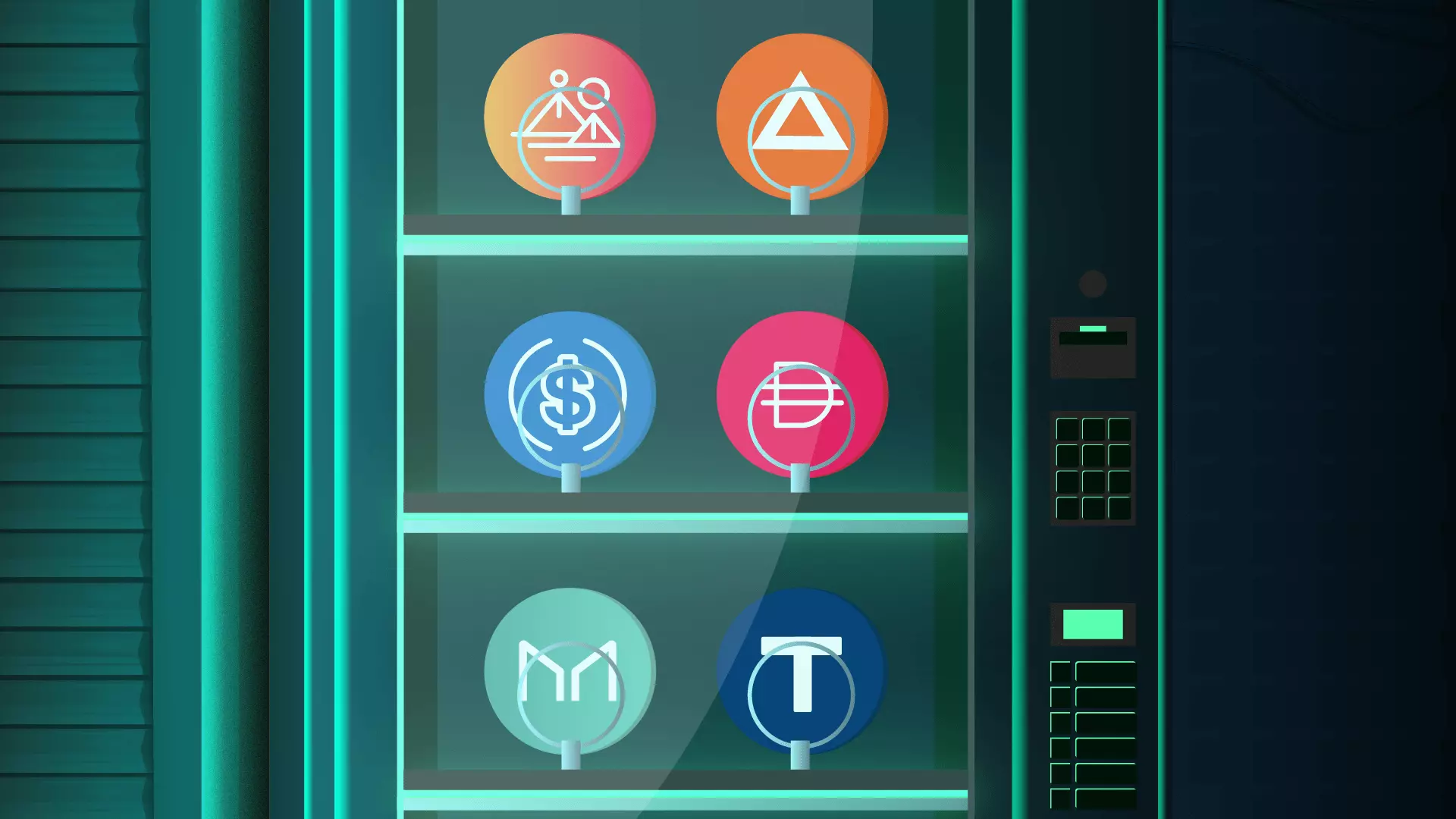
The variety of possible developments on Ethereum includes fungible tokens, where each one is equal to the other.
ERC-20 (Ethereum Request for Comments #20), proposed by Fabian Vogelsteller in November 2015, implements an API for tokens within smart contracts.
This allows functionality such as transferring tokens from one account to another, obtaining the current token balance of an account, as well as the total supply of token available on the network. In addition to others, such as approving that an amount of token from an account can be spent by a third-party account.
If a smart contract implements these methods and events, it can be considered an ERC-20 token contract. And once implemented, it will be responsible for keeping track of tokens created on Ethereum.
ERC-721 protocol and video games
What are non-fungible tokens. Collectible digital tokens and their secondary markets. The CryptoKitties case.

Video games that use Ethereum as part of their code open up a whole new, but not unknown, world of possibilities.
Just as there is the ERC-20 standard for fungible tokens (the same as each other), there is another that allows the creation of non-fungible tokens (different from each other), which enables the existence of digital items with unique characteristics and, therefore, collectibles.
The first implementation of this standard came with the game CryptoKitties, which allowed you to buy digital cats, collect them, and even breed them. In its first few months, this game became so popular that it completely saturated the Ethereum network, which was still in its infancy.
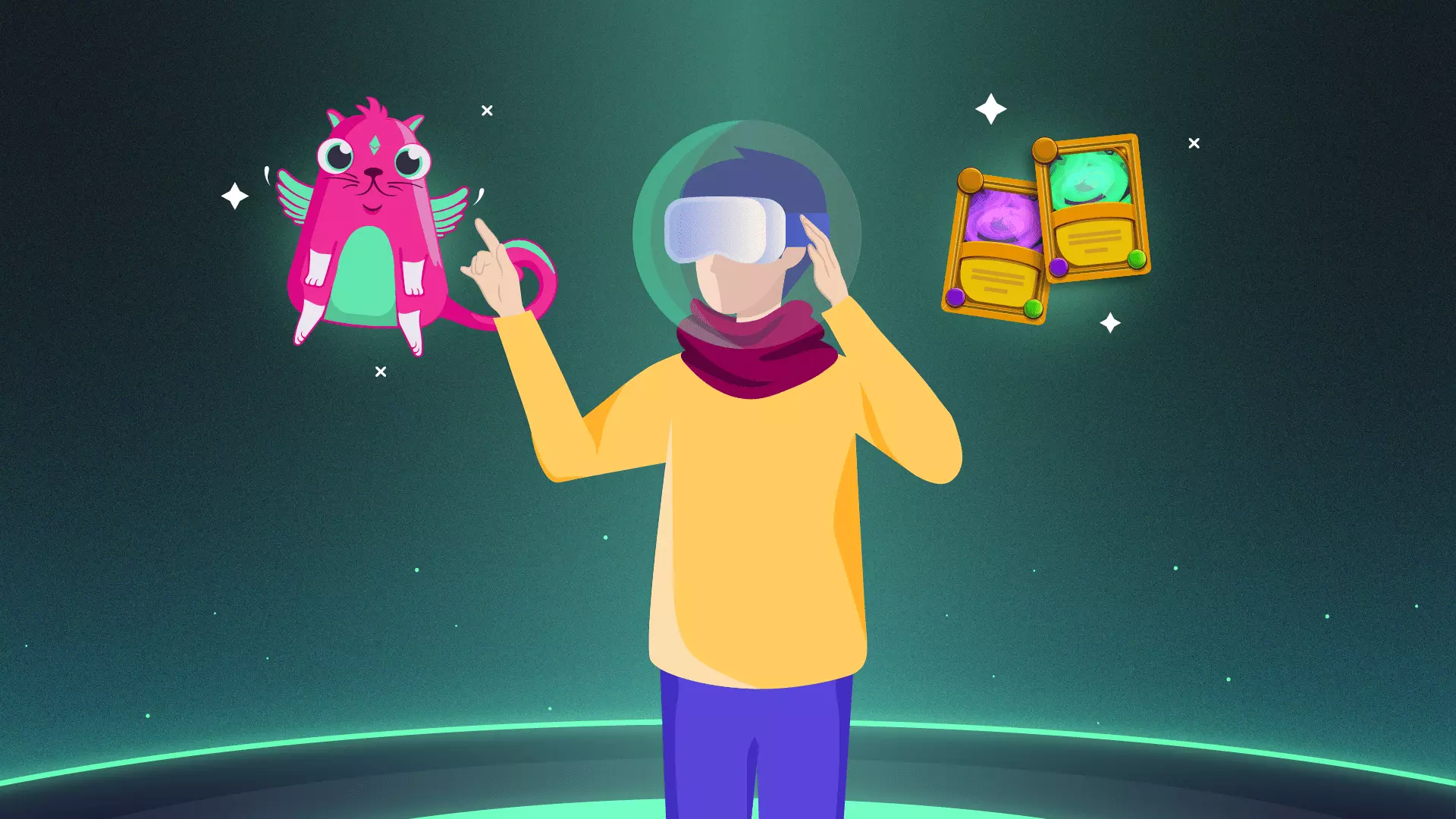
Ethereum also enables the creation of non-fungible tokens, each independent and different from the others.
Another case is the digital trading card game Gods Unchained. This game, very similar to Magic: The Gathering, allows its users to create decks of cards to fight against other players, creating different strategies.
But the most interesting point of the game is that the cards are represented by ERC-721 tokens and each player can do whatever they want with them. From giving them to a friend to selling them on the secondary market. In addition, the number of cards is regulated by a smart contract, which allows you to know the total number of cards available.
There is also Decentraland, a game that mixes virtual reality with real estate business. Decentraland is a virtual reality world where players can purchase plots of land, also represented in ERC-721 tokens.
There they can build whatever they want, and even buy or sell other plots. Additionally, as the game is built on interoperable standards, there is a possibility that CryptoKitties or Gods Unchained tokens could be introduced.

